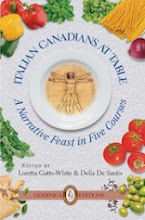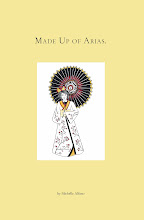 Today is our last day. We rose at 7.30 and had our breakfast. One of only two parties up at that time we were seated, unasked, at my favourite table, in the corner, north side of the restaurant ... Yogurt, fruit, cereal, muffins, juice and coffee ... just a wonderful buffet with a great mix of breakfast/brunch foods.
Today is our last day. We rose at 7.30 and had our breakfast. One of only two parties up at that time we were seated, unasked, at my favourite table, in the corner, north side of the restaurant ... Yogurt, fruit, cereal, muffins, juice and coffee ... just a wonderful buffet with a great mix of breakfast/brunch foods.Off R went to his massage. I sat on the white veranda and then started sketching the exterior of the front of the main house, the southern side (to the right of the front of the house) where The Cloisters are situated and the back courtyard on the eastern side. I asked for coffee and kept writing.
Our time was winding down ... we packed our things, sorted out our account. I asked for a history of the house and got this pamphlet from which I freely quote below. I seemed to recall that some fancy pants or other owned the house and my memory did not fail me.
Here follows a "Slightly Skewed History of Langdon Hall" from various sources ...
Matthew Wilks (1816-1899) and Eliza Astor Langdon ((1818-1896), the granddaughter of John Jacob Astor, the old dinosaur who founded the Astor empire on fur trading and real estate in the U.S., were living in New York when Matthew Wilks came across an ad for a property named Cruickston Park in Galt, ON. He bought the estate with the intention that he would use it as a summer residence. Eventually the property grew to one thousand acres.
In 1892, the youngest of their seven children, Eugene Langdon Wilks ((1855-1934), returned to Canada, at 37, after attending school in England and working in Western Canada. He married a local girl, Pauline Kingsmill, the great-granddaughter of the founder of nearby Galt, ON.
Time magazine once described Eugene Langdon Wilks as a "New York socialite". At the turn of the century, he rented a house from George W. Vanderbilt III so you get a sense of the sort of crowd he moved in.
In 1898, Eugene Langdon Wilks purchased 29 acres at the NW corner of the Cruickston property and an adjoining 76 acres.
It was Eugene and Pauline who hired an architect to build a new residence. It was built in the Federal Revival style popular in the U.S. in the 1890s between 1898 and 1901. It was designed by New York architect Edward Lee Young and construction was supervised by Toronto architect Eden Smith. Originally, it held 32 rooms over 25,000 square feet and was meant to used as a summer residence. The house was finished by 1902.
Distinguishing features of Langdon Hall are "the semi-circular fanlight above the main entrance door and the full-height neo-classical portico with pediment supported by Ionic columns."
In 1914, Pauline fell ill with cancer and died in 1914. The couple had no children. She had been attended to by Marguerite Briquet, a Swiss nurse, whom Eugene subsequently married the next year. They had three daughters: Catherine Claude, Anne Marguerite and Marion Lucille. The family divided its time between a home in New York city, their chateau near Tours, France and Langdon Hall.
Eugene Wilks died in 1934 and the family remained at Tours. With WWII, the French army commandeered the Tours chateau so Marguerite and her three daughters took up permanent residence at Langdon Hall.
Catherine Langdon Wilks married Garth Thomson and she inherited Langdon Hall when her mother passed away in 1961. They continued to live there with their son Graham Thomson until 1980 and sold the estate as well as 30 acres in 1982 to Gabriele Kutz-Wenzel and her husband, veterinarian Dr. Rudolph Wenzel, sometimes referred to as a "German industrialist". They sold it to Dedi-Care Group Inc. in 1986.
My eagle-eyed husband R found a stone, resembling a headstone, near the spa entrance in The Cloisters bearing the name of both Catherine Langdon Wilks and Garth Thomson (Thomson died in 1997 according to the stone). I was unable to determine if Catherine is still living. In 2002, a reporter in the Cambridge Reporter who knew TGarth homson described said Thomson had described himself as the "only functioning coal yard millionaire in the world".
In 1987, William Bennett, a local Cambridge architect, and his wife Mary Beaton bought the estate. They made extensive renovations and opened the hotel in 1989. After acquiring the house with the help of a group of investors, Bennett and Beaton, searched antique shops and auction sales in the countryside and picked up silverware, pictures, antique furniture and Oriental rugs to furnish the house.
In a related news story ... Eugene's sister, Katherine Langdon Wilks (1854 - 1948), daughter of Matthew Wilks, upon Matthew's death in 1899, assumed ownership of Cruickston Park and bred prize-winning horses. After her death in 1948, Katherine's nephew Matthew Wilks Keefer modernized the farm operation and bred prize Hereford beef cattle. In 1968, Matthew Wilks Keefer gifted the estate to the University of Guelph, which took possession of it on his death in 1973. In 1996, the University disposed of the manor house and 53 acres. This was acquired by a young couple from Cambridge, Jan Chaplin and Mark Fretwurst, who later acquired the remaining 913 acres in the year 2000. Their stated desire is to preserve the estate for future generations.
(Source: The History of Langdon Hall brochure; Internet searching; region.waterloo.on.ca; factiva)










No comments:
Post a Comment